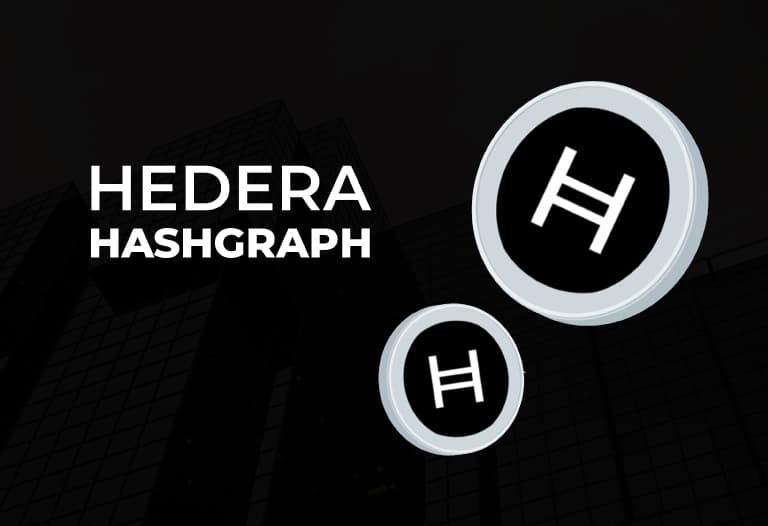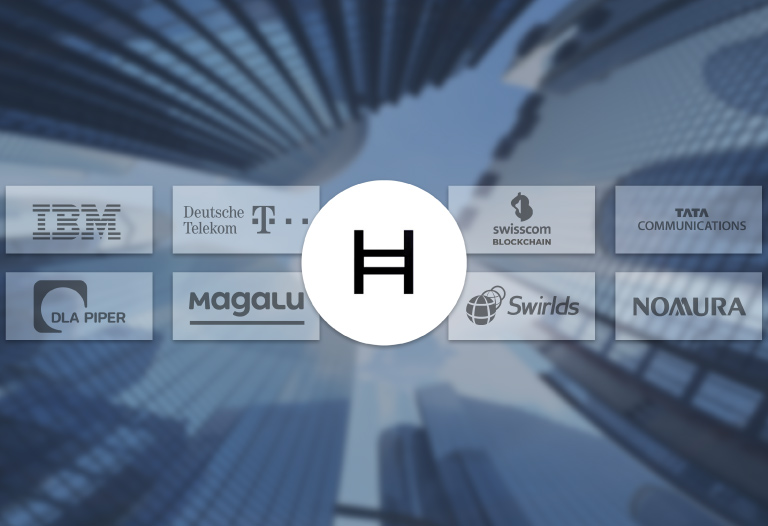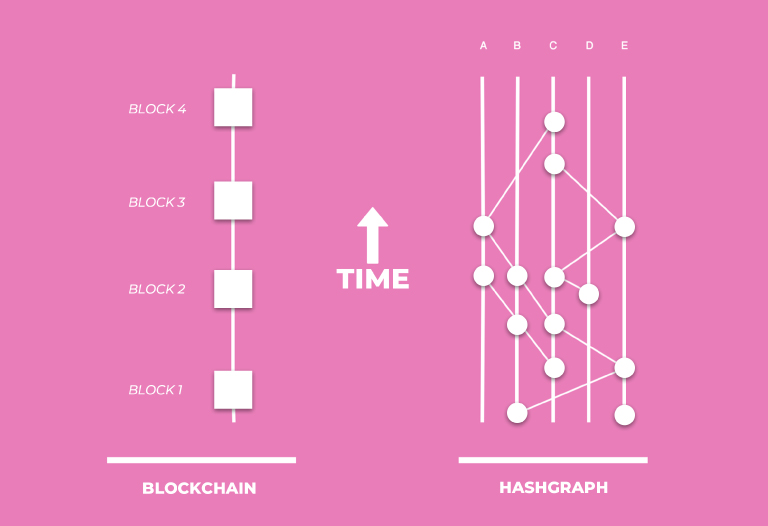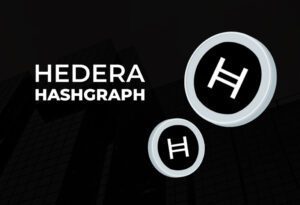
Table of Contents
ToggleHedera Hashgraph is a popular network and cryptocurrency because of its relationship with large companies such as Google, IBM and LG. The native coin, HBAR is, at the time of this writing, ranked as the 54th largest cryptocurrency in market capitalization.
In the following we are going to make an analysis about this peculiar network, which is governed by a consortium of companies, uses Proof of Stake and instead of using a blockchain it uses a DAG.
What is Hedera Hashgraph? Understand how it works
As we explained in the DAG article, a cryptocurrency consists of a decentralized register of balances (distributed ledger). Generally this decentralized ledger is known as blockchain. However, other types of data structures can be used to create a distributed ledger.
Hedera uses a DAG (which they call Hashgraph) instead of a blockchain. Validator nodes (equivalent to miners) add transactions to the registry without packing them into blocks. This way the confirmation times are very low and there is no block size limit.
As a result, network fees are very low and, according to the website itself, more than 10,000 transactions can be made per second.
Moreover, Hedera is not an open network. Only the 39 renowned companies that are part of the Hedera Hashgraph Governance Council can be validating nodes. These 39 companies are the ones that govern the protocol, deciding on future changes.
The consensus protocol used is the Proof of Stake. Specifically, two-thirds of the coins need to vote on valid transactions to reach a consensus. Since all validating nodes (which do staking with their coins) belong to the Hedera Hashgraph Council, these 39 companies control at least two-thirds of the HBAR supply.

Uses of Hedera
Hedera can be used to perform transactions, store information, run smart contracts and decentralized applications and to create private Hyperledger networks (consensus service).
The information stored by the network nodes can have a limited lifetime, after which it is no longer maintained.
In terms of smart contracts, the language used is solidity, the same one used in networks such as Ethereum. In this way Hedera is benefiting from its network effects, as it is the most well-known smart contract language.
Validator and mirror nodes
As we have said, the validator nodes are in charge of adding transactions to the registry, and announcing it over the network. These nodes can only be executed by the 39 companies that govern Hedera, and they have to put HBAR in staking.
As a reward, they receive commissions from users who use any of the above functions. In a moment we will see what the 3 existing commissions are.
Unlike validator nodes, mirror nodes function properly as a Bitcoin node would. These nodes do not add transactions to the log, and only “read” information from the Hedera DAG. They can therefore be used by anyone, to monitor information that is relevant to them. As they do not participate in the Proof of Stake protocol, they do not generate any monetary benefit.
Hedera Commissions
- Node fee: this fee is paid when a transaction is transmitted to the network so that a validating node can include it in the register. It goes directly to the corresponding node.
- Network commission: this commission is paid to all validating nodes for verifying your transaction and keeping it in memory while consensus is reached. It is paid to the Hedera Treasury and, from there, it is distributed to the nodes.
- Service fee: this fee is paid for services such as storage of information and execution of smart contracts. Payment is made based on computational and storage requirements. Like the network commission, it is paid to the Hedera Treasury, from where it is distributed to the validating nodes.

Future plans
Hedera Hashgraph plans to open its Proof of Stake consensus system so that anyone can run validator nodes and do HBAR staking. This transition would occur when the one-third of coins not controlled by the Hedera Hashgraph Governance Council are sufficiently distributed.
At first the validator nodes would have to go through permissions and KYC (Know Your Customer) regulations to be fully identified. And later the staking would be without permissions.
There is also the concept of Proxy Staking, which consists of delegating HBAR to a third party who will stak it. However, even if HBAR staking is open, the system will still be governed by the Board of 39 companies
Another idea mentioned in one of his papers is that of sharding. That is, dividing the DAGs or Hashgraphs into different fragments that are maintained by different nodes. This way each node only copes with the computational and storage cost of one shard. This technique is popular for its use in Ethereum 2.0 and Polkadot with parachains, although as a downside it worsens decentralization and independent verification.
Disadvantages of Hedera Hashgraph: my opinion
Personally, I find it misleading to use the term “decentralized” for a network that, as we have explained, is governed by a group of large companies.
This council has the privilege to modify HBAR’s monetary policy, change the rules of the protocol, participate in the consensus protocol with validator nodes, control two-thirds of the coin supply and will also decide who can participate in the consensus protocol (staking).
This would be equivalent to needing special permission from a group of large companies to mine Bitcoin and participate in the Proof of Work, while at the same time unilaterally deciding the future of the protocol.
Since in Proof of Stake whoever wins the most is the one who controls the most coins, this creates a centralization pressure on supply. This is especially true in cases like Hedera, where a few entities control most of the supply.
Another problem is that, by not technically restricting the amount of resources that users can demand from the network, we are greatly increasing the hardware requirements to run a node. In other words, nothing comes for free, and by allowing many transactions per second, running a node becomes more expensive.
If an ordinary user cannot run a node, he must rely on third parties about how many coins he has. In Bitcoin, a node can be set up for 200€, as explained in this tutorial. In Hedera Hashgraph, a node amounts to several thousand euros, which is beyond the reach of most ordinary users.
A Bitcoin node allows you to verify all information with the guarantee that the rules will not be changed overnight by a central group. Even if you had an expensive Hedera node, you could not have this guarantee since the rules are decided by the Governance Council.
In short, Hedera Hashgraph is one of those cryptocurrencies designed to be closer to the traditional monetary system than to the transparent and sovereign system that Bitcoin represents.







